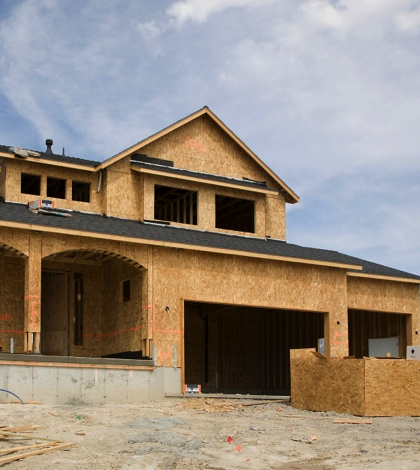Prices and sales are expected to go up, but the market will still be held back by higher mortgage rates and general uncertainties about the economy. For most people, buying a house might not get any easier this year.
Don’t expect major doings in the Inland Empire housing market this year.
On the other hand, don’t expect anything less than a reasonably strong market that will continue to improve during the next 12 months, albeit at a slow pace, according to several analysts who track the Inland region.
In other words, 2015 probably will look a lot like 2014, with median prices continuing to rise and a slightly better performance on the sales side of the ledger. Those are probably good things for a submarket that was hit harder than most places by the recession.
As long as the Inland housing market doesn’t slip backward, there’s reason to remain optimistic and no reason to panic.
“We’re going to have continued price appreciation in 2015, and sales will also go up,” said John Karevoll, analyst with CoreLogic DataQuick in San Diego, which issues monthly reports on the Southern California housing market. “The only question is, how much will they go up?”
In the Inland Empire, 2014 will be remembered as a year that the housing market favored sellers over buyers, mostly because of high prices and the fact that not enough new houses were built, which created a lack of supply.
In August, Southern California sales hit a four-year low for that month, dropping 18.5 percent year-over-year, according to CoreLogic DataQuick.
The Inland region did more than its share to contribute to that sharp decline, dropping 22.7 percent in Riverside County and 21.1 percent in San Bernardino County. Meanwhile, median prices rose in all six Southern California regions, including the Inland Empire: up 13.2 percent in Riverside County and 14.1 percent in San Bernardino.
The local housing market changed little as the year came to a close.
In November, the most recent numbers available, sales were down 9.5 percent in Southern California, 10 percent in Riverside County and 9.6 percent San Bernardino County. At the same time, median prices rose seven percent in Southern California, 11 percent in Riverside County and 16.7 percent in San Bernardino County, CoreLogic DataQuck reported.
The Inland housing market probably won’t make a full comeback until a lot more houses are built, and it’s difficult to predict when that will happen.
“We’re still in recovery mode, and the core activity in the market is performing well,” Karevoll said. “Where we’re having trouble is the move-up market, where people are looking for an extra bedroom or a second house, because those houses aren’t being built at the moment.”
Fortunately, with the U.S. economy performing well and employment up, it’s not likely that the housing market – local, statewide or national – will be derailed this year.
“Only if there’s a major crisis, like problems with the cost of oil or some turmoil in the Middle East,” Karevoll said. “Otherwise, I don’t see the market going back to being dysfunctional.”
Nationwide, sales of new single-family homes were only up an estimated 1.8 percent compared with 2013, according to preliminary data
released by the National Association of Realtors in Washington, D.C.
A Forbes magazine article published last month noted that price gains for previously owned homes slowed dramatically in 2014, and it predicted that trend will continue throughout the upcoming year.
“Easing housing inventory levels and the exit of investors from the market are helping to put the brakes on home price escalation,” the report stated. “This change represents a fundamental shift in the market: we’re out of the rapid recovery phase and into a new normal.”
The report also predicted that U.S. home prices will rise this year, but slower than they did during 2014. That, however, won’t automatically make buying a home easier, because home prices are expected to rise faster than incomes, while higher mortgages will also erode affordability.
The report cited Realtor.com, which is predicting that housing affordability nationwide will drop five to 10 percent this year, and the Mortgage Bankers’ Association, which is forecasting a five percent increase in mortgages by the end of 2015.
The Inland Empire’s housing market has recovered from the Great Recession slower than some of California’s other submarkets, and that trend is likely to continue through 2015, said Selma Hepp, senior economist for the California Realtors Association in Los Angeles.
“Sales [in the Inland Empire] were down 10 percent and prices were up about five percent, and I would call that a relatively strong market” coming out of the recession,” Hepp said. “No, it hasn’t come back as fast as some markets, like the Bay Area, but it’s still coming back. It’s approaching a better balance between buyers and sellers, which is very important.”
Riverside and San Bernardino counties probably will still be plagued by low housing supply this year, said Steve Johnson, founder and president of Steve Johnson Real Estate Advisors in Jurupa Valley.
Only about 5,000 new single-family homes are likely to go on the market in the two-county region this year, while another 4,400 or so will start construction, but not be finished, before the end of the year.
“At its peak, the Inland Empire used to produce 30,000 single-family homes, so we aren’t getting close to the productivity that we could be getting,” said Johnson, whose company consults with land developers and brokers on the state of the real estate market. “There’s still a lot of reluctance about speculative construction, so total construction continues to lag.”
New housing in the Inland Empire, like the rest of the country, is being squeezed by a younger generation that isn’t as anxious to own a home – fulfilling the so-called American Dream – as generations before it have been.
“A lot of millennials [anyone under 35] are deciding that home ownership isn’t for everyone,” so they aren’t buying,” Johnson said.”At the same time, a lot of older people aren’t buying either. The market is being hurt at both ends.”
 IE Business Daily Business news for the Inland Empire.
IE Business Daily Business news for the Inland Empire.


